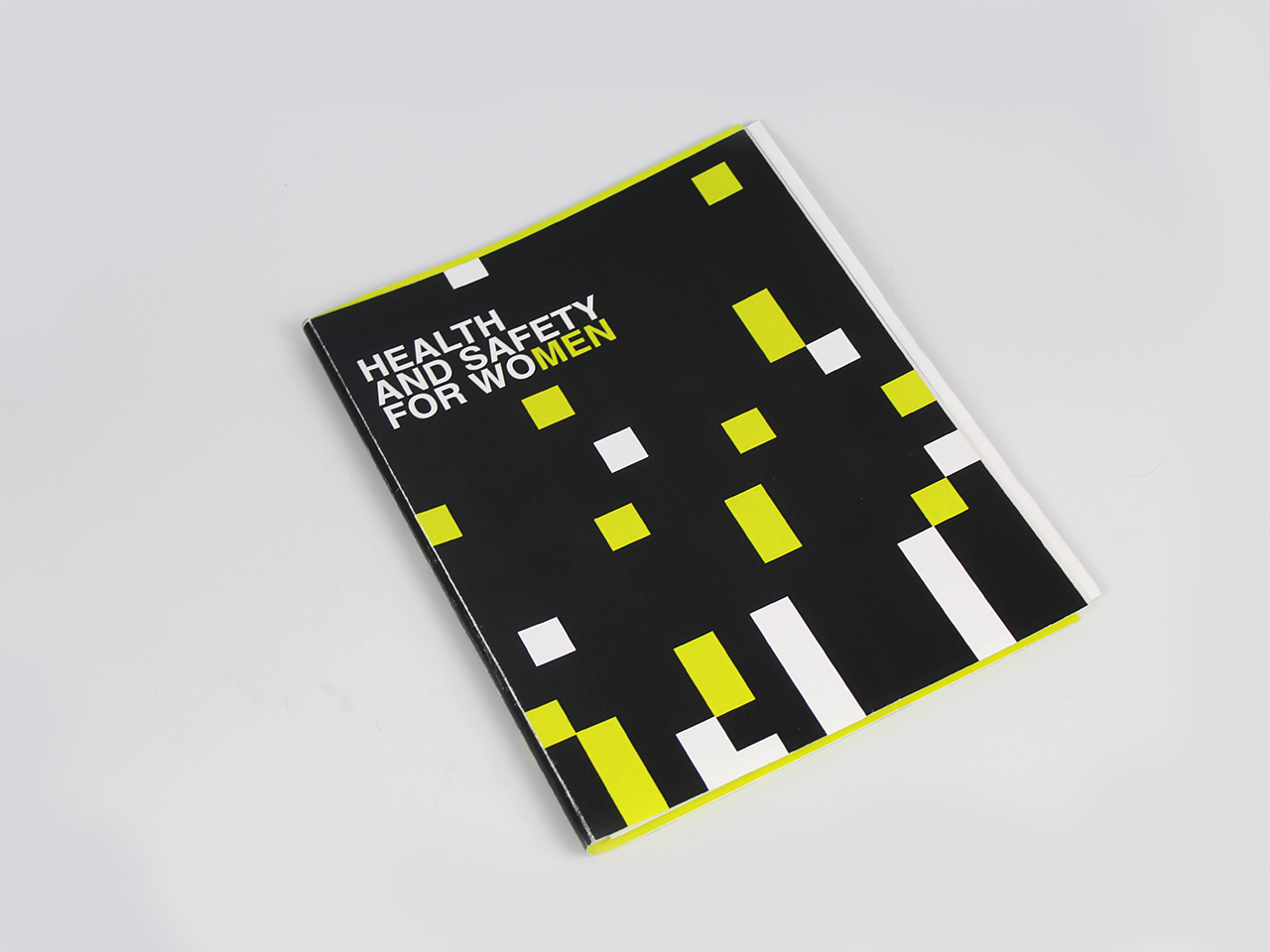
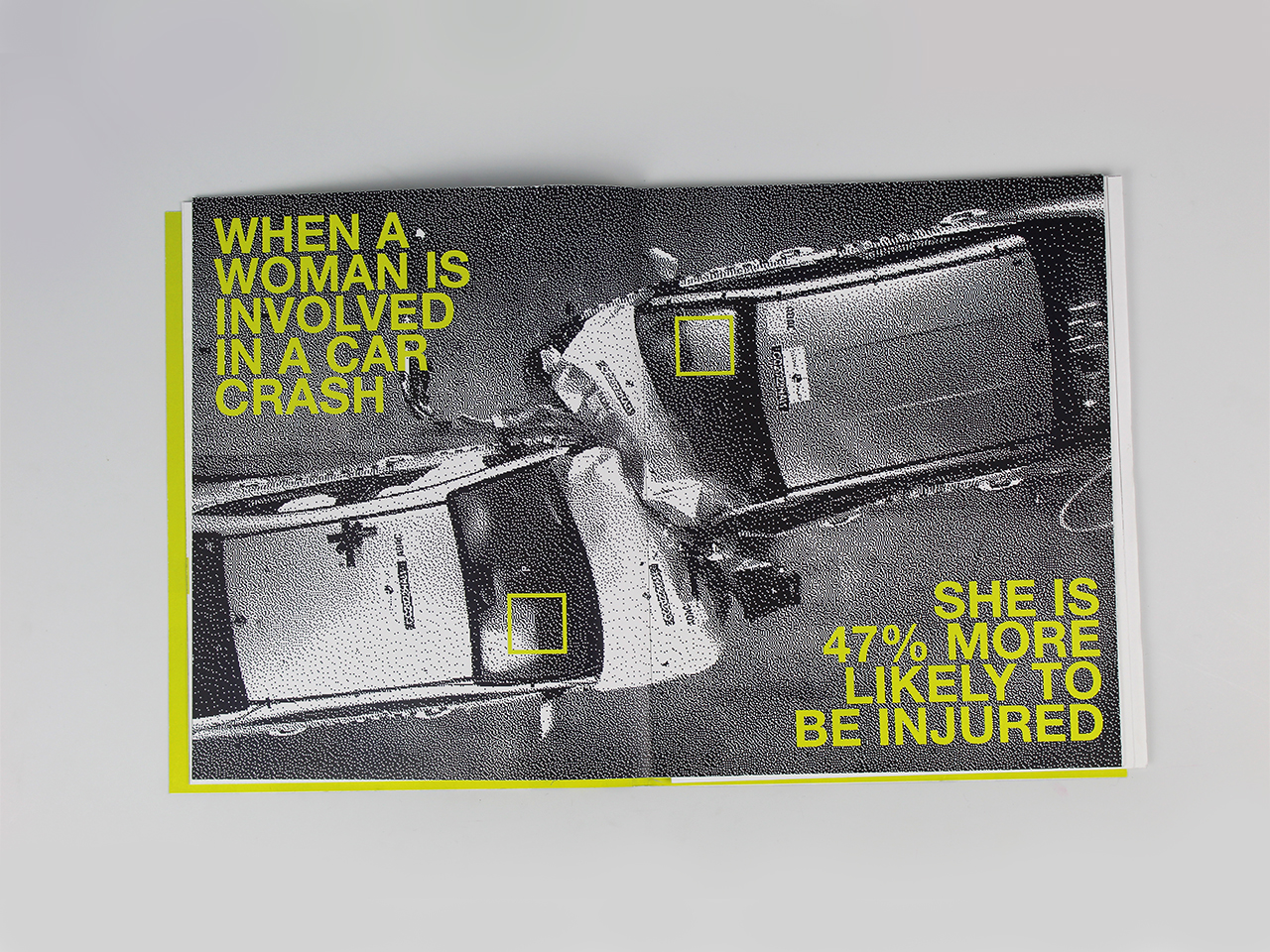
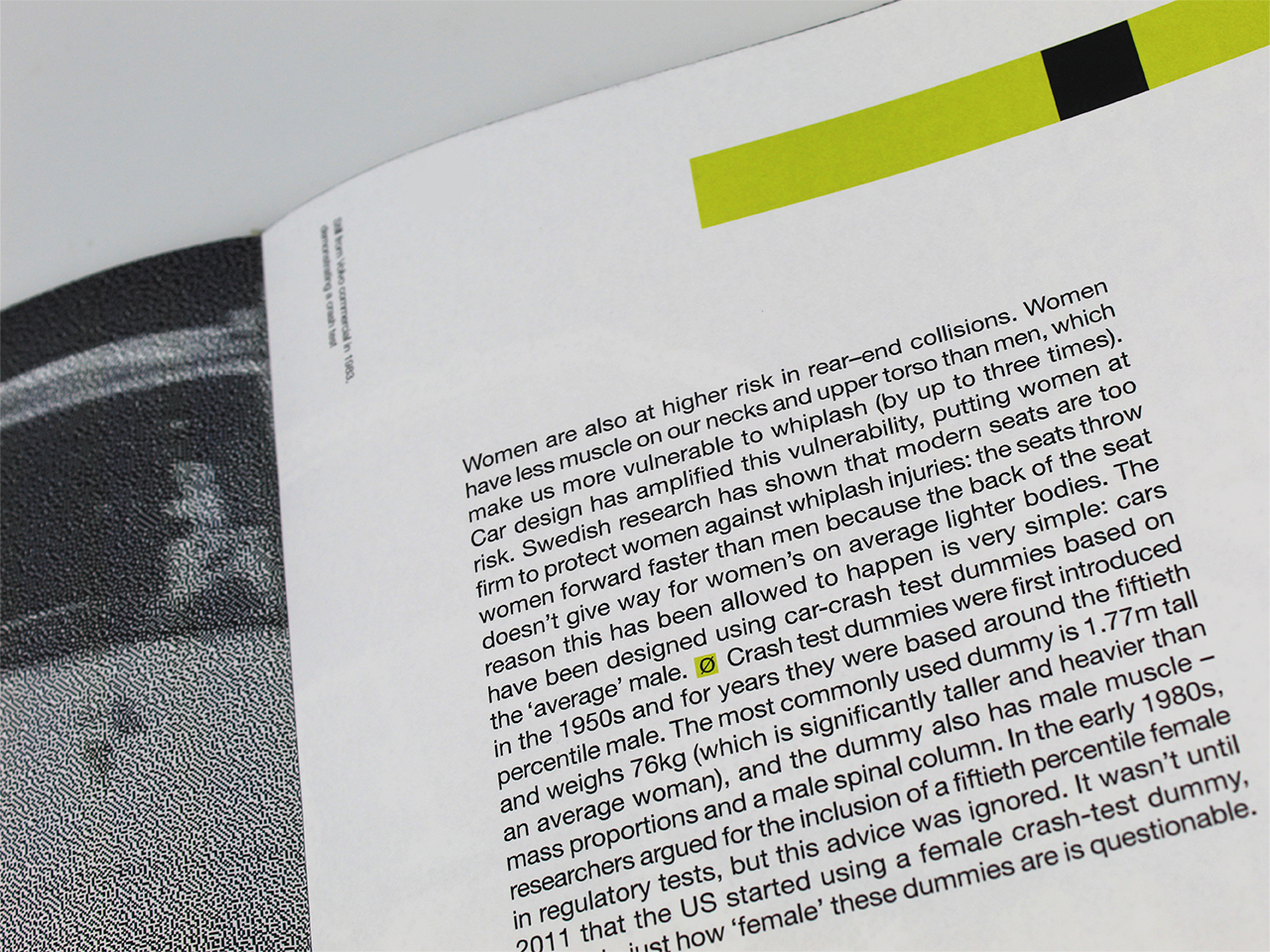
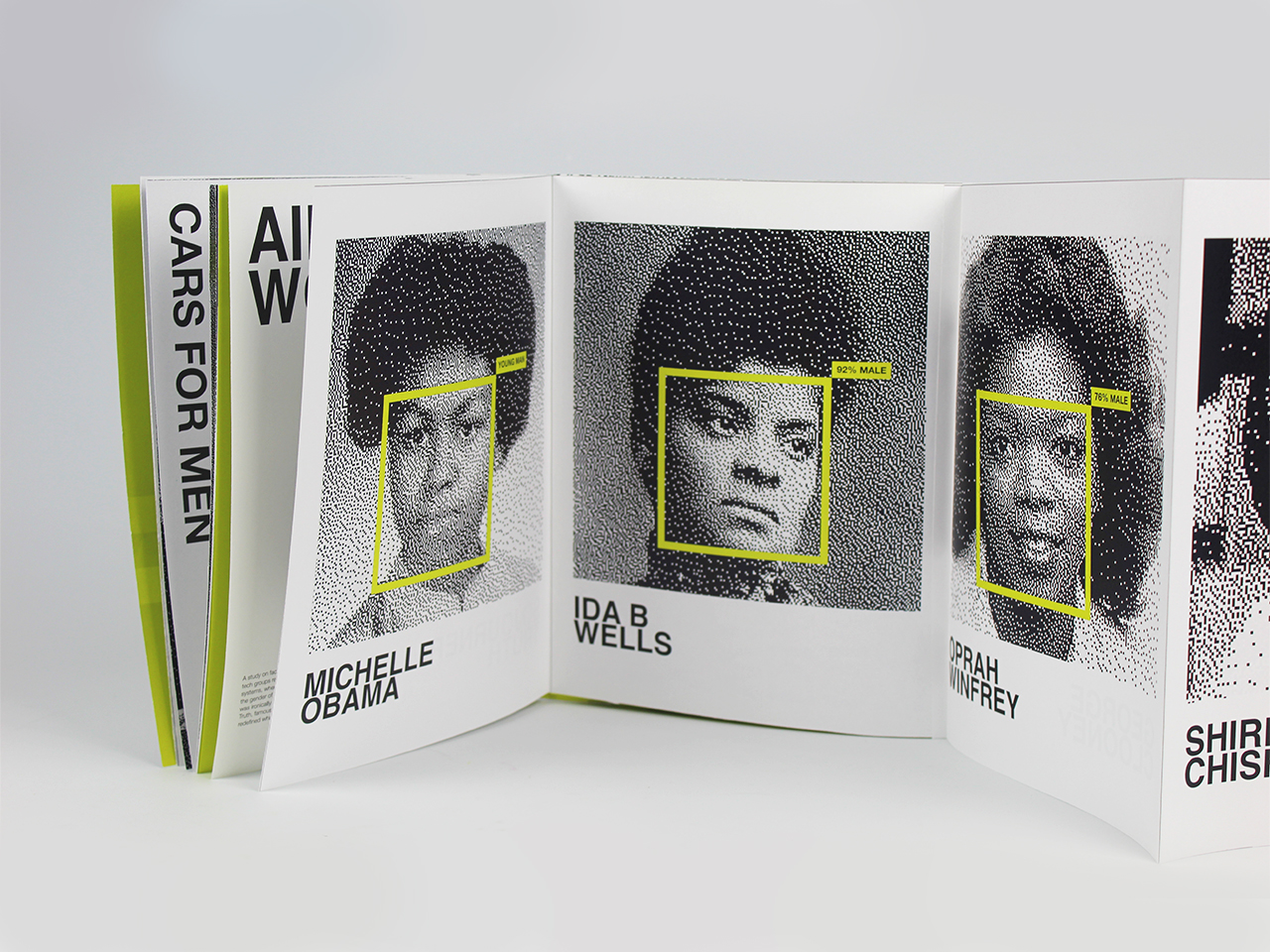
Enya is a multidisciplinary designer based in Dublin, with a passion for typography, editorial and publication design. Her work explores topical issues such as gender inequality and climate change, using bold colour palettes and strong typography to explore these themes in a dynamic way. Her love for playful copywriting and experimental image treatment is something which is central to her work, using an energetic visual language to raise awareness to important social and cultural issues.




This publication explores the issue of gender data bias, that is the ways in which data collection favours men over women. Using the visual language of the ‘Health and Safety’ industry, this book highlights the dangerous ways big data gaps put women at risk – from being more likely to be injured in a car accident to having a serious illness go undiagnosed.
The publication features bold typography and bitmapped images throughout, which is occasionally interrupted with poster spreads to alert readers of the shocking statistics related to this data bias. Illustrated squares are dispersed throughout the spreads, mimicking the dispersion of data in our lives. The book displays the data in a visually exciting way, making the content accessible for everyone.
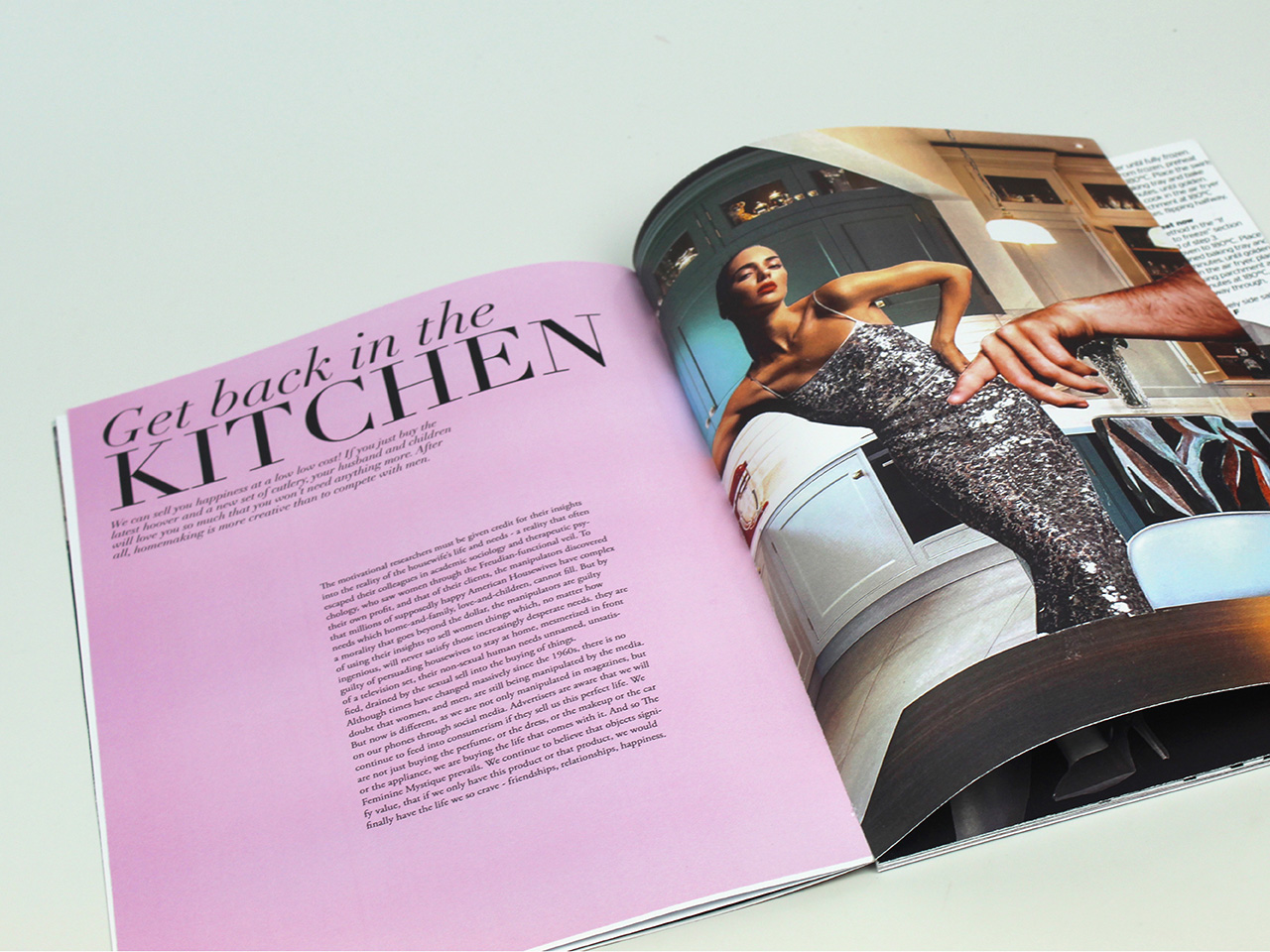
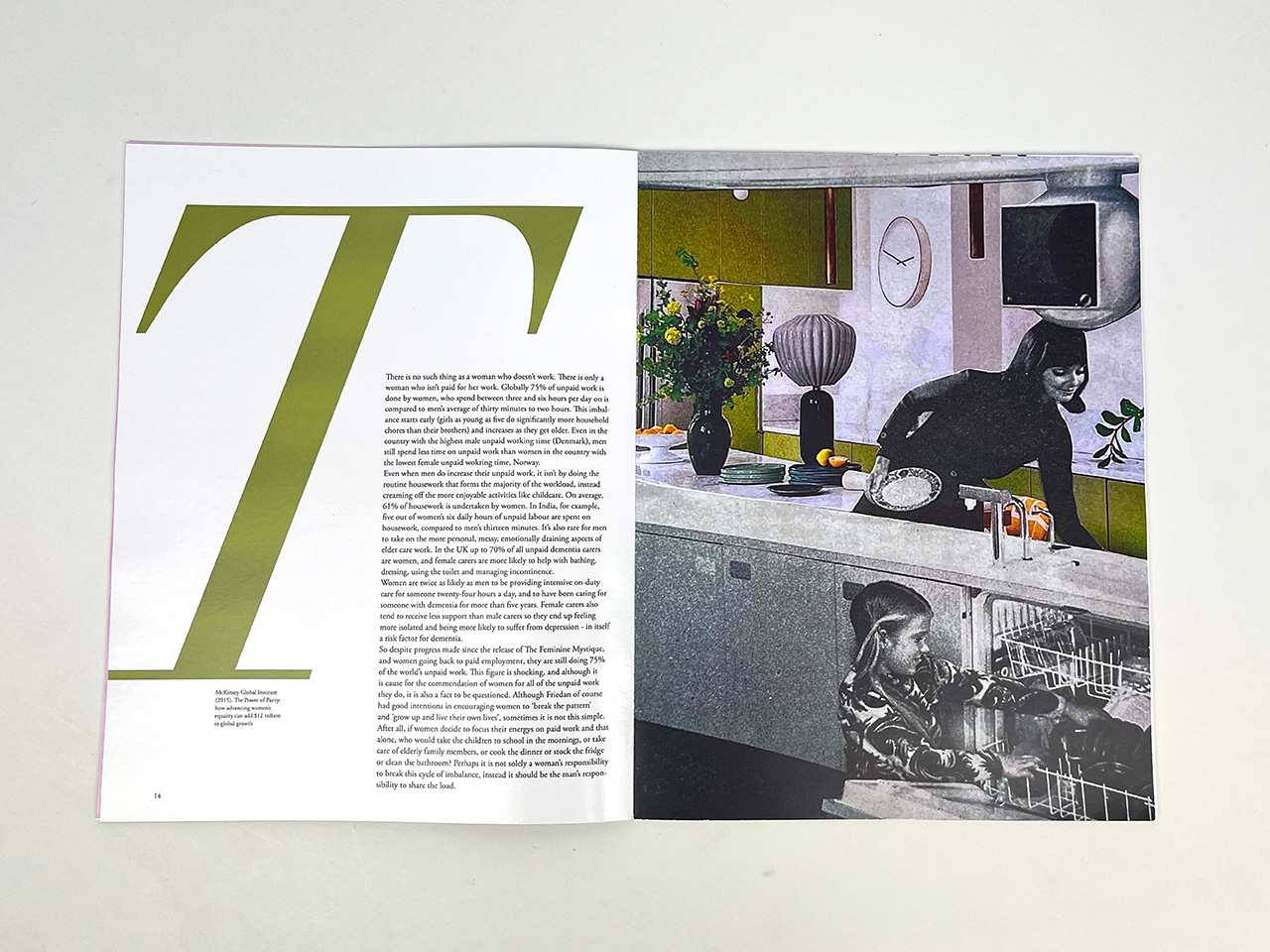
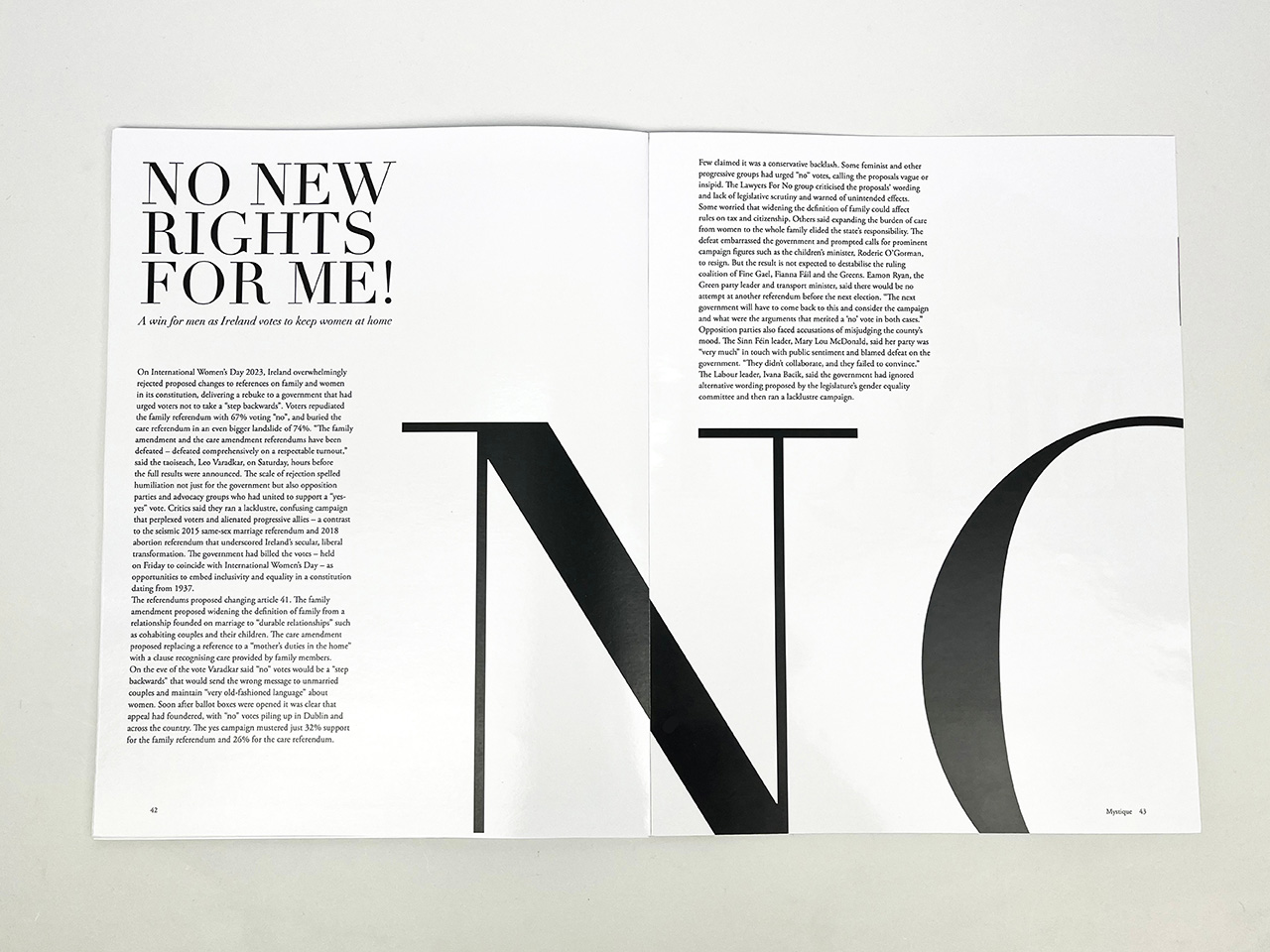
‘Mystique’ magazine explores issues of gender inequality through the lens of Betty Friedan’s ‘The Feminine Mystique’. Through themes explored in the book, this publication aims to critique the traditional roles of women as perpetuated by the media. It takes the format of typical women’s magazines, using photomontage from magazine imagery to problematise the way women have been portrayed in the media from the 60s to the present day.
The juxtaposition used in these montages allows the viewer to reflect on woman’s role as ‘homemaker’, and the inequalities women still face in the workplace. Other themes explored in the publication include consumerism, gender disparities of unpaid work and the gender pay gap. Overall, the magazine aims to show how the role of the woman has changed since the 1960’s, and the barriers women continue to face in achieving equality in the workplace and in the home.